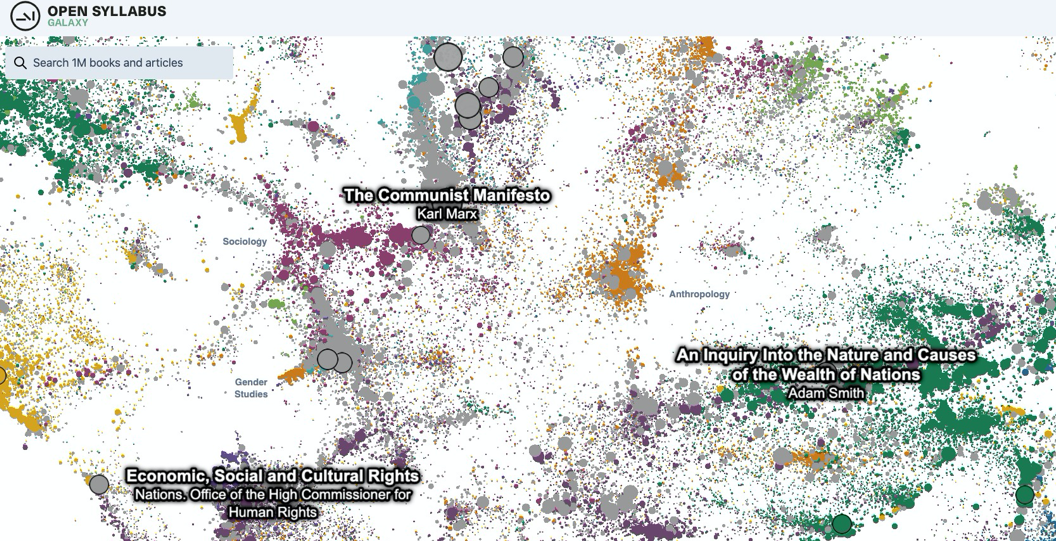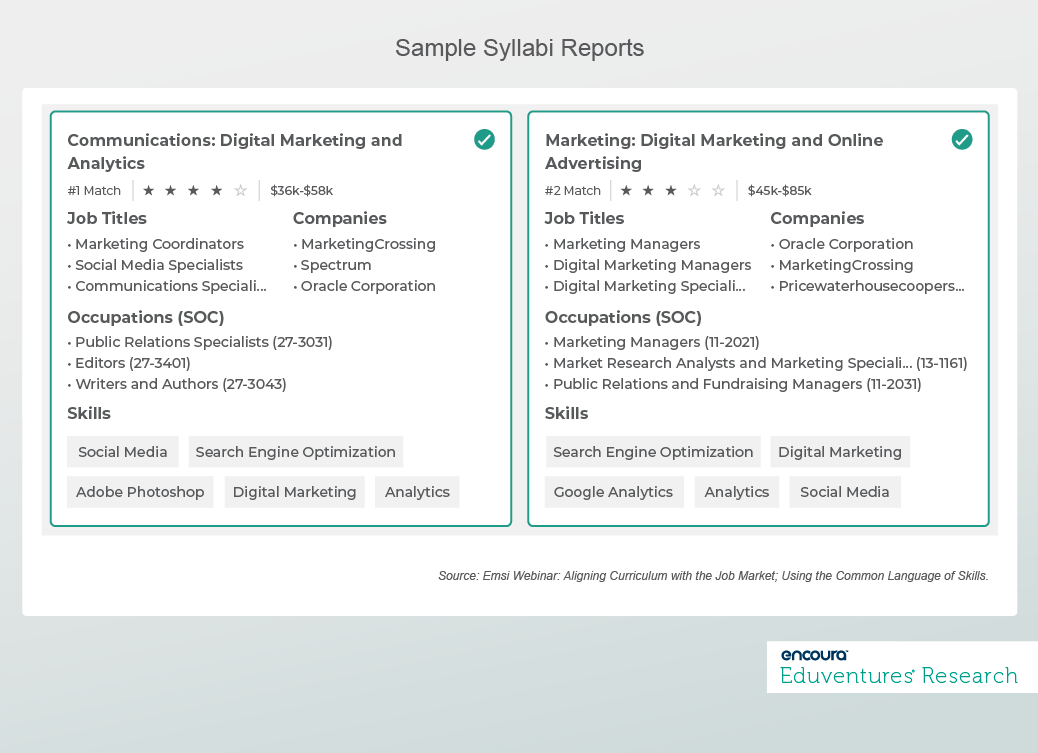Behold the postsecondary syllabus: descending from the Latin word for “list” and the Ancient Greek “sittybos” for a descriptive label for a document.
Beyond this admirable longevity, what is the function of a syllabus in postsecondary teaching and learning? Is it simply administrative, providing a nominal level of instructor accountability? Is the syllabus an advertisement, enticing students to enroll in one section rather than another? Or is it purely promotional, boosting the sales or rentals of required texts?
Perhaps all of these may be true, but
What’s Taught and with Which Resources?
According to American College Personnel Association (ACPA), there’s no shortage of postsecondary syllabi. ACPA’s Syllabus Clearinghouse provides access to thousands of syllabi, organized by subject area and made available by permission of faculty authors. While there’s no ratings or rankings system, this tool is a useful benchmark for understanding the range and variety of syllabi in use.
But, more importantly, what content do postsecondary syllabi actually contain? Open Syllabus, an open-source tool devoted to mapping the content of more than 7,000,000 syllabi and reading lists across 2,500 institutions worldwide, answers this question. At the heart of Open Syllabus is the Syllabus Galaxy, a powerful visualization tool that can simultaneously explore the content citations in a subset of about one million of these syllabi (Figure 1).
OpenSyllabus Galaxy: Karl Marx and Adam Smith

As Figure 1 illustrates, The Communist Manifesto is assigned in more than 11,000 syllabi, while Adam Smith’s Wealth of Nations appears in just over 5,500.
While the pervasiveness of the syllabus is unassailable, is it a reliable proxy for what happens in the classroom and how instruction can relate to learner outcomes and employment? Could an analysis of syllabi content or course descriptions—components of virtually every postsecondary learning environment—represent a scalable opportunity to align the classroom and the workplace?
That Notorious CIP-SOC Crosswalk
A new pilot project developed by Emsi attempts to cast the ubiquitous syllabus in a new light. As a provider of hiring and labor market data, Emsi is attempting to address one of the most perplexing problems plaguing higher education: the gap between which skills are taught by schools versus which are sought by employers. Our recent Wake-Up Call exploring the Open Skills Network and SkillUp Coalition outlines related efforts with similar goals.
Emsi has identified one of the core drivers of this problem: the disconnect between Classification of Instructional Programs (CIP) and Standard Occupational Classification (SOC) codes. Born in 1980 and periodically updated by the National Center for Education Statistics (NCES), the CIP codes represents a taxonomy of Title IV eligible content classifications. Born in 1977, and maintained by the Department of Labor, the SOC system organizes all types of jobs into a separate, but in theory accessible, categorization.
The discontinuity between how schools organize instructional content and how employers categorize required skills and knowledge has created a cottage industry of CIP-SOC crosswalks. While many of these crosswalks deliver a baseline level of alignment between schools and employers, they often fail to keep pace with changes in the workplace and hiring systems. They also rely on broad descriptions of content rather than identifying the specific skills that learners could obtain by completing a program.
Emsi’s bet is that the gap between skills that are “taught” versus skills that are “sought” can be closed by aligning skills mined from syllabi to its massive collection of hiring data. This effort has coalesced into a new pilot project: Skillabi.
Once Emsi loads an institution’s syllabi content into Skillabi, discreet skills are identified through an analysis of course or program-level learning outcomes. These skills are then bundled into descriptions that match these skills to hiring and job posting data. A matching score is applied to the course or program showing a percentage correlation. Additional metadata, such as salary, hiring companies, and SOC codes is added to the description. Faculty or staff at the institution can use this information to align the syllabi more closely with Emsi’s hiring data and promote this association to prospective or current students.
Figure 2 shows Emsi’s analysis of two syllabi.

But while syllabi are indeed ubiquitous and contain valuable data, they do not reveal much about student comprehension of skills. Yes, faculty produce them, students download or save them, and Emsi can mine them for data. While Emsi recognizes the gap between syllabi and assessment, it contends that hiring practices have tended to rely on baseline evidence that an employee has been exposed to, rather than mastered, a particular skill.
Secondly, would faculty or support staff be willing to adjust their syllabi based on hiring trends and labor market data? This may be less of a challenge in technical programs, where the gap between program content and hiring requirements is not quite so wide. Indeed, Emsi has recently highlighted a Skillabi pilot project at Texas A&M Central, where faculty and leadership acknowledged the need to tighten the alignment between course and program level objectives and local hiring trends.
The Bottom Line
Emsi is not alone in its effort to eliminate the gap between “skills taught” and “skills sought.” Anthology’s Occupation Insight also leverages hiring data—obtained from Burning Glass, another job market data provider—for schools seeking to improve the workplace relevance of their syllabi and course descriptions.
What might happen if postsecondary syllabi become something more than perfunctory artifacts, and instead clearly and accurately communicate the value proposition of a course or program? While critics might fear the influence of corporate hiring needs on how schools design and deliver curriculum, closing the CIP-SOC divide could draw support from all quarters.
Postsecondary syllabi have endured. Beyond their longstanding administrative or promotional functions, it is also worth watching to see if they can take on the added role of helping to align classrooms to workplaces.
Never Miss Your Wake-Up Call
Learn more about our team of expert research analysts here.
Eduventures Principal Analyst at ACT | NRCCUA
Contact
This recruitment cycle challenged the creativity of enrollment teams as they were forced to recreate the entire enrollment experience online. The challenge for this spring will be getting proximate to admitted students by replicating new-found practices to increase yield through the summer’s extended enrollment cycle.
By participating in the Eduventures Admitted Student Research, your office will gain actionable insights on:
- Nationwide benchmarks for yield outcomes
- Changes in the decision-making behaviors of incoming freshmen that impact recruiting
- Gaps between how your institution was perceived and your actual institution identity
- Regional and national competitive shifts in the wake of the post-COVID-19 environment
- Competitiveness of your updated financial aid model

